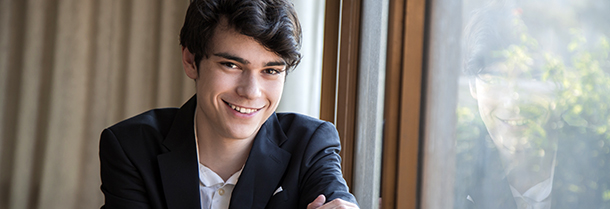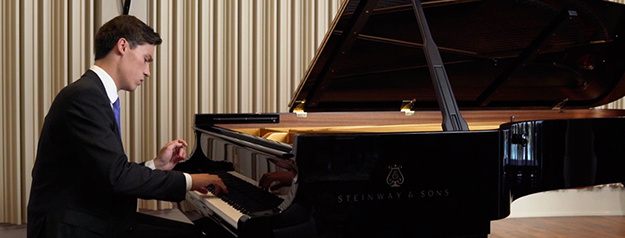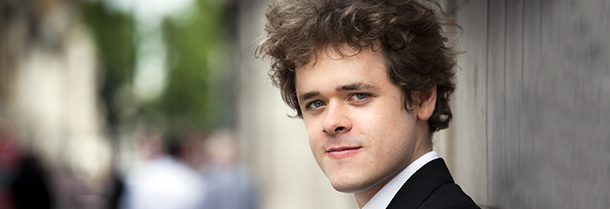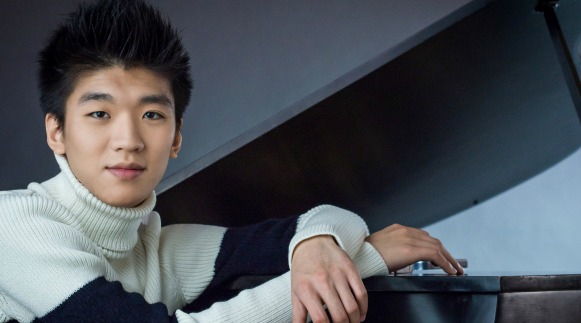Tag: Alexander Scriabin
-

-

PROGRAM NOTES: JAEDEN IZIK-DZURKO
Alexander Scriabin Valse Op. 38 It is easy to see why Alexander Scriabin was known as “the Russian Chopin.” Like his Polish musical forebear he wrote almost exclusively for the piano and began his career by composing mazurkas, waltzes, nocturnes, preludes and études. In this Valse we catch the composer near the end of his…
-

PROGRAM NOTES: YEVGENY SUDBIN
Domenico Scarlatti Sonata in B minor K 197 Sonata in G major K 455 “Probably one of the most outrageously individual compositional outputs of the Baroque era is to be found in the keyboard sonatas of Domenico Scarlatti,” writes Yevgeny Sudbin in the liner notes to his 2004 Scarlatti album. This may explain why Scarlatti’s…
-

PROGRAM NOTES: BENJAMIN GROSVENOR
Robert Schumann Arabesque, Op. 18 In the autumn of 1838 Robert Schumann made a career decision. He would move from his native Leipzig to Vienna to find a publisher and a sympathetic public for his piano compositions. The public he hoped to attract in his year in the Austrian capital was a public of the…
-

PROGRAM NOTES: YUN-CHIN ZHOU
Domenico Scarlatti Three Sonatas The 550-odd sonatas of Domenico Scarlatti are perhaps the most successful works to migrate from the harpsichord to the modern grand piano. Their transparent texture of simple two- and three-part keyboard writing has one foot in the imitative counterpoint of the Baroque while anticipating the Classical era of Haydn and Mozart…
-

PROGRAM NOTES: PAVEL KOLESNIKOV
Wolfgang Amadeus Mozart Fantasy in C minor K. 475 The year 1785 was a good one for Mozart. In the words of musicologist John Irving, he had become something of a ‘hot property’ in Vienna, enjoying considerable success both as a published composer and as a performing musician. But Mozart had also acquired a reputation…
-

PROGRAM NOTES: BENJAMIN GROSVENOR
J. S. Bach: Five transcriptions Benjamin Grosvenor opens his program with a series of piano transcriptions, a genre that was wildly popular in the late nineteenth and early twentieth centuries, then went out of fashion, and is now making something of a comeback. Transcription – the transferal from one medium to another – is as…


